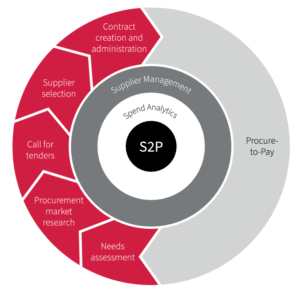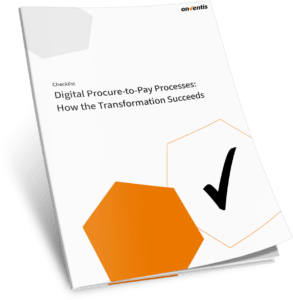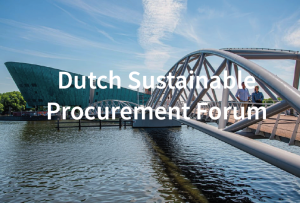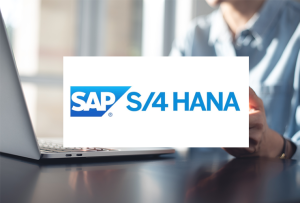What is Procure-to-pay?
Procurement Topics in a Nutshell
Procure-to-pay (also called purchase-to-pay or P2P) represents the entire procurement process. In concrete terms, the procure-to-pay process starts in the case of an acute requirement and includes the sub-processes of requisitions to invoice payments to the supplier. The aim here is to make each step in purchasing and finance as cost- and time-efficient as possible.

Procure-to-pay simply explained
The operational purchasing process (P2P) starts in the case of acute demand and includes the sub-processes from the requisition to invoice payment to the supplier. Unlike the strategic and tactical processes, some sub-process steps can be executed by the requisitioner, who can satisfy the requirements based on the assortments and agreements defined in the tactical process. The primary objective of the operational purchasing process is the efficient handling of repetitive procurement transactions to save process costs.
Procure-to-pay as part of the overall source-to-pay process
Procure-to-pay processes are part of the overall “source-to-pay” purchasing process or S2P for short. The S2P process is made up of the strategic, tactical, and operational process steps source-to-contract and procure-to-pay, and includes purchasing disciplines such as supplier management and spend analysis. The management of suppliers and spend complete the entire procurement cycle.

The P2P process includes the following steps:
- Request: collect data and information from stakeholders to initiate the purchase of goods or services
- Approval: validate orders and move them forward for fulfilment
- Purchase order: authorisation of a purchase transaction by the buyer
- Delivery/incoming goods
- Invoicing: invoice issued by the supplier to the buyer
- Invoice matching: compare issued invoices to verify the information and data
- Payment: payment of the invoice
The individual steps of the procure-to-pay process are handled by different departments of a company. Due to the involvement of different stakeholders and processors of single tasks, every step is monitored and approved by various people. This leads to a high complexity in the procedure that involves time-consuming, expensive, and error-prone manual processing.
Digital procure-to-pay processes for optimised procurement
Due to these complications, procure-to-pay holds considerable potential to be digitalised. Operational processes from the inquiry and approval to the purchase, delivery, and invoice to the invoice reconciliation and payment can be automated end-to-end. To achieve digital procure-to-pay processes, following steps are required.
Introducing an e-procurement or source-to-pay solution
Cloud-based P2P applications and e-procurement or digital source-to-pay solutions provide the infrastructure to holistically manage enterprise-wide procurement. This provides employees in a purchasing organisation with a digital tool to procure requirements easily. The functionality is similar to an online store.
Electronic exchange of documents
Equally important is the electronic exchange of documents such as order confirmations, delivery bills or invoices. If all the documents required in the P2P process are exchanged electronically – ideally via the e-procurement or S2P solution used – it significantly streamlines and optimises the process.
Automating invoice processing
In order to fully digitalise the operational procurement process, connected financial processes have to be automated as well. Corresponding invoice processing solutions match purchase orders, order confirmations and invoices, thus enabling automated invoice processing. Manual intervention is only necessary in exceptional cases.
Electronic payment
At the end of a digital P2P process, payment is made electronically. This is usually done by connecting an (ERP) system that triggers the payment or by integrating payment service providers into the digital procurement solution.
The advantages of a digital P2P process
Using e-procurement or source-to-pay solutions, the P2P process is optimised to the maximum. At the same time, massive capacities are created for other purchasing-relevant tasks in the strategic and tactical areas. A fully digitalised P2P process also makes a significant contribution to the end-to-end automation of downstream financial processes, as it is possible to access existing order and contract data and goods receipts directly.
Here are the measurable benefits at a glance:
- Cost savings
- Accelerate and optimise processes
- Time savings
- Reduce errors
- Reduce manual and repetitive tasks
- Minimise maverick buying
Weitere BlogsMore BlogsMeer blogs




